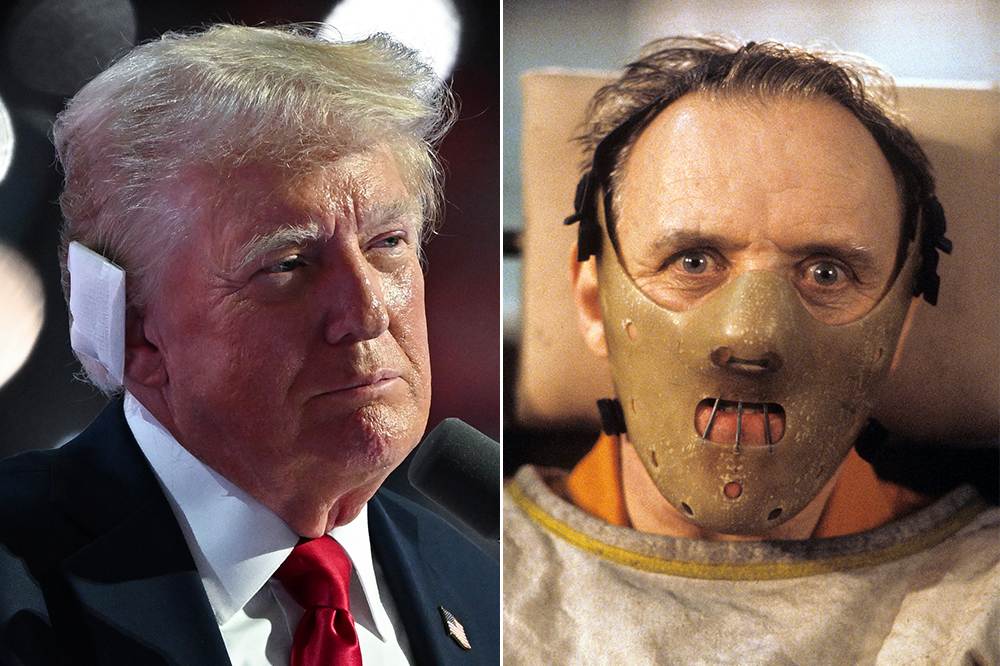Why Is Donald Trump So Fixated on Hannibal Lecter?
Politics tamfitronics
For a moment, Donald Trump seemed — despite everything — to be a whole new man.
We’d been told by speakers throughout the final night of the Republican National Convention that the attempt on his life had changed the 45th president’s outlook and his approach to politics. The experience had made him a unifier.
“He turned down the most obvious opportunity in politics to inflame the nation after being shot,” Tucker Carlson, the former Fox News anchor, said in his speech Thursday night, hours before Trump took the stage. “In the moment, he did his best to bring the country together.”
And then, somewhat deep into Trump’s stem-winder of a speech, he started talking about Hannibal Lecter.
Popular on Variety
“The press is always on me, because I say this,” he began, in an aside. He knew it was not the first time he’d brought up Hannibal, but he couldn’t resist. “Has anyone seen ‘Silence of the Lambs’? The late, great Hannibal Lecter. He’d love to have you for dinner.”
Great movies have the power to bring people together, certainly. And Trump’s fascination with popular culture had taken over the final night of the Republican convention, with a shirt-rending performance by the wrestler known as Hulk Hogan and a musical performance by Kid Rock preceding Ultimate Fighting Championship CEO Dana White introducing Trump. But this was, once again, a random insertion of Trump’s fascination with the character Anthony Hopkins played across three films. The 45th President, and current Republican nominee, referred to Lecter as a “wonderful man” in May, while once again quoting his aphorism about having a friend “for dinner.”
In both cases, Trump’s evocation of Lecter was to make the case that crime in America is out of control — that potential Lecters, including immigrants whom Trump would forcibly deport, live among us. There would be something movingly childlike about this imaginative capacity, under another set of circumstances: Trump has always struggled to differentiate what’s onscreen from what is real. After all, his entire professional life has been building towards a star turn, given his fascination with the media and culture industries. Why shouldn’t Hannibal Lecter be just another one of the characters who could, potentially, stride across the border and start devouring?
Trump’s appetite for popular films is one of his most relatable qualities, perhaps — he’s a lover of big, broad entertainment. In a 1997 New Yorker profilea writer accompanied Trump on board a plane and watched as he watched only the highlights (which is to say, the most violent fights) of the Jean-Claude Van Damme film “Bloodsport.”
So it’s no wonder, maybe, that the parts of “The Silence of the Lambs” Trump remembers are Hannibal’s antics, and his one big, funny quote. And it’s unsurprising, too, that he thinks of the character as a relatable avatar for the way crime works in the real world. Hannibal Lecter is a supervillain — cunning beyond belief, with appetites beyond what we’d consider human and a unique way with words. He’s the perfect imagined adversary for a presidential candidate who sees himself as unusually clever (rather than, after everything seemed to break his way toward the end of the 2016 cycle, lucky) and unusually well-spoken (rather than just finding a good phrase now and then in an incredibly long-winded nomination acceptance speech). In Lecter, Trump has found a villain whose outsized monstrosity matches Trump’s own perceived heroism, his own ability to fight back against any villain — whether real or part of our collective imagination.
If Trump’s debate against President Biden were unsatisfying — if, in the end, it felt a little too easy — there’s always the imagined challenge of hunting down Hannibal Lecter crossing the border. And perhaps those who fear a Trump restoration should be glad that at least some of his focus is on Hannibal, and that the lambs have not yet stopped screaming.




